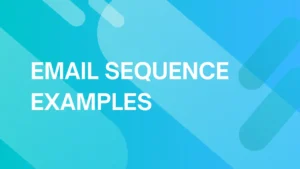Mastering the Code: A Comprehensive Look at Email Headers
You’re likely familiar with the email basics: crafting the perfect subject line, penning an engaging body, and selecting your recipients.
But have you ever wondered about the hidden world beneath every email you send and receive?
Buried beneath the surface of every email lies a complex code known as the email header.
This inconspicuous aspect of digital communication holds the keys to understanding how your email travels through cyberspace, why some emails land in spam while others reach the inbox, and how email providers protect you from spam and phishing attacks.
In this guide, we’ll unlock the mysteries of the email header, taking you on an in-depth exploration of its inner workings, its critical role in email security and deliverability, and how you can use this knowledge to your advantage.
Whether you’re looking to optimize an email marketing campaign or simply intrigued by the mechanisms behind everyday digital communication, this journey into the world of email headers promises to be a worthwhile adventure.
What Are Email Headers?
An email header is a short string of code that’s used to authenticate an HTML message. They house crucial information like the sender’s and recipient’s addresses, subject line, and time stamps. The header always comes before the email body.
Beyond these basics, they also contain several technical aspects that ensure the secure and successful transit of the message from the sender to the recipient.
While the average user might not interact with this information, it becomes highly relevant for email administrators, security personnel, and digital marketers.
Email headers serve three purposes:
- Providing information about who sent the message and who is supposed to receive the message
- Preventing spam and phishing attacks
- Tracking the email route
Key Elements in an Email Header
Email headers are composed of various fields, each contributing unique pieces of information about the email. Here are some of the key components:
- From: The sender’s address.
- To: This displays the recipient’s address. If multiple recipients are there, each address is separated by a comma. It also includes addresses that were carbon copied (CC) or blind carbon copied (BCC).
- Subject: The subject line of the email.
- Date: The timestamp when the email was sent. It usually follows the format – day, date month year time in UTC.
- Received: A field that appears multiple times in a header, documenting the email’s journey across different servers to reach the recipient.
- Return-Path or Envelope From: This field shows the bounce address where non-delivery receipts or bounce messages are sent.
- Reply-To: This field shows the email address that replies will be sent to. By default, this will be the sender’s address.
- DKIM Signature and DomainKeys: This field represents a digital signature that verifies the email has indeed been sent by the claimed sender and hasn’t been tampered with during transit.
- Message-ID: The message ID contains a unique string of characters that identifies each email.
- Importance: This field indicates the importance level of the email.
- Mime Version: Shows the Multipurpose Internet Mail Extensions (MIME) version used to extend an email’s format and functionality
- Content-Type: This indicates whether the email is plain text, HTML, multimedia, etc.
- X-Spam-Score: This field represents the spam score of the email as evaluated by spam filters.
- X-Mailer: This field shows the software used to send the email.
- Content-Transfer-Encoding: This field indicates how the message body is encoded.
How Email Headers Work
When an email is composed and the send button is hit, the email client adds a header to the outgoing message.
This header, encoded with vital information like sender, recipient, and subject, tags along with the email as it begins its digital journey.
As the email moves from the sender’s email client to the server and then hops across various intermediary servers until it finally reaches the recipient’s server, each server adds its “Received” line to the email header.
This ongoing process creates a detailed log of the email’s route, which proves invaluable in diagnosing any delivery issues.
Moreover, the email header plays a crucial role in authentication checks at the recipient’s server.
Fields like DKIM signatures are verified to confirm the sender’s identity and the email’s integrity.
Based on these checks and the information in the header, the recipient’s email server decides the fate of the email: whether it should be delivered to the inbox, spam folder, or rejected outright.
How to Find and View Email Headers
Accessing email headers is a relatively straightforward process, but it can differ slightly depending on the email client you are using.
Here are step-by-step instructions for some of the most popular email platforms:
1. Gmail Email Headers
2. Microsoft Outlook Email Headers
3. Yahoo Email Headers
4. Mozilla Thunderbird Email Headers
5. iCloud Mail Email Headers
6. Zoho Mail Email Headers
7. AOL Mail Email Headers
Role of Email Headers in Security & Deliverability
Email headers serve a much more significant purpose than simply providing routing information and content format details.
Their role in email security and deliverability is often overlooked, but they hold immense potential in maintaining an environment free from spam and ensuring your emails reach their intended destination.
1. Anti-Spam Measures
In the frontline of battling spam and phishing attacks, email headers stand as an indispensable component.
These headers equip email servers with crucial information to tell apart genuine emails from potential threats.
- ‘Received’ Field: This component is akin to an email’s travel log. It details the path an email has traversed, allowing servers to spot any unusual routing which could signify spamming attempts.
- DKIM Signature: It’s the hallmark of an email’s authenticity. This signature verifies that the email indeed comes from the mentioned domain, and assures that no meddling occurred during the transmission.
- SPF Record: Acting like an email’s access pass, the SPF record affirms that the email is dispatched from a server that has been authorized by the sender’s domain.
Together, these components provide a robust mechanism against email spoofing, laying the foundation for a solid anti-phishing measure.
2. Email Deliverability
A properly formatted email header can significantly impact the deliverability of your emails.
Email Service Providers (ESPs) scrutinize email headers to authenticate the sender’s identity and ensure the email content aligns with the established standards.
For instance, a missing or incorrect DKIM signature could result in the email being flagged as potential spam, landing it in the recipient’s spam folder, or blocking it entirely.
Also, ESPs keep track of sender reputations, which are closely tied to the ‘From‘ field in your email headers.
If you consistently send emails that recipients engage with positively (they don’t mark them as spam, for example), this can boost your sender reputation and improve your overall deliverability rates.
Best Practices for Email Headers
Maintaining optimal deliverability and high email security requires attention to detail when configuring your email headers. Here are a few best practices:
- Consistent From Field: Be sure that the ‘From’ field is consistent in your emails. Changing it frequently can raise red flags for spam filters.
- Authenticating Emails: Always authenticate your emails using SPF, DKIM, and DMARC records. This not only increases deliverability but also protects your domain against spoofing.
- Accurate Subject Lines: The subject line should accurately reflect the content of your email. Misleading subject lines can lead to your email being marked as spam.
- Custom Headers: If you’re sending transactional emails or running an email marketing campaign, consider using custom headers. They can provide additional information about your email, such as campaign IDs, that can be useful for tracking and analysis.
When it comes to email headers, the goal is transparency and authenticity.
Troubleshooting with Email Headers
When you encounter email deliverability issues, email headers serve as an invaluable diagnostic tool.
Interpreting the encoded information within them can provide insights into the root causes of these issues and help you strategize effective solutions.
Understanding Bounce Messages
‘Bounce’ messages are your first clue in diagnosing email issues. They often come with details about why an email was undelivered.
There are some common error codes you might encounter:
- 550 Error Code: This error often signifies issues with the recipient’s server, like a non-existent email address or a blocked server.
- 400 Range Error Codes: These usually indicate temporary problems such as a full inbox or an unresponsive server.
By understanding these codes and cross-referencing them with the other information in the header, you can quickly identify and rectify issues impeding your email deliverability.
Making Use of Email Header Information
Beyond error codes, other email header elements can also provide important information for troubleshooting.
For example, SPF, DKIM, and DMARC records can tell you about authentication issues, while timestamps can help you trace delays in email delivery.
Key points to consider include:
- SPF, DKIM, and DMARC records: These help diagnose authentication issues. If your emails are not getting through, checking these records can indicate whether they are being flagged due to perceived authenticity problems.
- Timestamps: These can help trace the journey of an email and identify where delays or hold-ups have occurred.
Understanding and correctly interpreting email headers can significantly streamline your troubleshooting process and improve the reliability of your email communication.
Customizing Email Headers
Customizing email headers is an often-overlooked strategy that can significantly enhance your email management.
This tactic can make your emails better fit your specific operational needs.
These custom fields can serve a variety of purposes, such as:
- Campaign Tracking: By including an ‘X-Campaign-ID’ field, you can easily track the performance of specific marketing campaigns. This unique identifier can help you analyze open rates, click-through rates, and other key metrics for each campaign.
- Operational Metadata: Apart from campaign tracking, you can also use custom fields to insert additional metadata relevant to your business operations. For instance, you might include fields to indicate departmental ownership of an email or to classify emails based on their content or purpose.
Customizing email headers provides you with the flexibility to tailor your email practices to your precise requirements, optimizing your communication efficiency.
Automating Header Analysis
Analyzing email header data manually can prove challenging and time-intensive.
Thankfully, a range of automated header analysis tools can significantly streamline this process.
These tools offer quick interpretations of complex header data, resulting in comprehensive, user-friendly reports.
Here are some of the best tools for email header analysis:
- MXToolbox’s Header Analyzer
- Google’s MessageHeader
- WhatIsMyIPAddress’s Email Header Analyzer
- IPVoid’s Email Header Analyzer
Balancing Benefits and Challenges
Customization and automation in email header analysis can streamline your operations and enhance security. However, bear in mind the potential challenges.
Customizing headers requires a good understanding of your operational needs and email protocols.
Similarly, automated tools can occasionally miss subtler details a human eye might catch. Prepare for these challenges and continuously refine your strategy.
By incorporating these aspects – customization for flexibility, automation for efficiency, and a clear understanding of benefits and challenges – you can optimize your email practices for robust security and effective communication.
Conclusion
Email headers, though intricate, form the backbone of our modern digital communication, helping our emails reach their intended recipients securely and efficiently.
They act as a comprehensive roadmap for each message, containing essential details from sender information to the path taken during delivery.
Understanding how they work and how to decode them provides invaluable insights, whether you’re an everyday user keen on improving email security or a business looking to optimize an email marketing campaign.
In a world where digital communication is increasingly vital, a full understanding of email headers and their management can provide you with a distinct edge.
So, whether you’re a seasoned email marketer or an individual keen on digital security, understanding and leveraging email headers will inevitably be a worthwhile investment.



